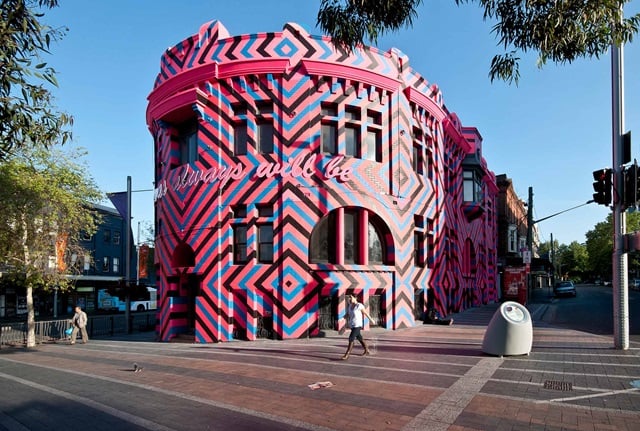


Allegorical groups of marble figures adorn the eastern and western façades of the Queen Victoria Building.
Artwork description
Two statue groups by sculptor William P MacIntosh were commissioned in 1897 during the construction of the Queen Victoria Market Building. They are located on the eastern and western façades of the building’s central arches.
The eastern group, located on the building’s George Street frontage, features a lightly draped female figure flanked by 2 semi-nude males. The western group, located on the building’s York Street frontage, features a male figure flanked by 2 draped females. The statues stand around 4.5m high and are made from Sicilian marble.
In his submission to Council in January 1897, MacIntosh outlined his specifications for the 2 allegorical groups of statues.
It was claimed in a 1984 article in the Sydney Morning Herald that the male figures in these groups were modelled on the body of Percy Cavill, one of Australia’s first swimming champions.
“On her right hand is seated a semi-nude muscular male figure representing ‘Labour’ as applied to the productive elements and to Industry with the appropriate symbols grouped around him. Vis-the wheat, ram, fruit, and beehive. On his head is a wreath of Olive – a symbol of peace …’.
On the other side is a corresponding male figure also wreathed with Olive, and representing ‘Commerce’ and ‘Exchange’, by his side a ship in full sail, in his left hand a bag of money and resting his right upon the ledger book’.”
– William P MacIntosh, describing the eastern statue group
“On the right is a seated semi-nude female figure representing ‘Peace’ holding a palm branch at her feet – symbols of ‘Literature’ and ‘Science’ …
“On the other side is a corresponding female figure representing ‘Plenty’ holding the ‘Cornucopia’ and showing the symbols of the ‘attendant Arts’ …”
– William P MacIntosh, describing the western statue group
Artist
MacIntosh was born in Scotland in 1857 and arrived in Sydney in 1880.
He taught sculpture at East Sydney Technical College and from 1880–1882 studied at the Sydney Subject Mechanic Schools of Arts, where he received the inaugural Students Prize in 1882. MacIntosh was commissioned by the Parkes Government to provide carved sandstone pillars and sculptures for the Sydney Museum of Applied Arts and Sciences and the Lands Department Building.







